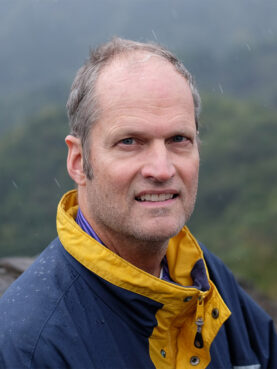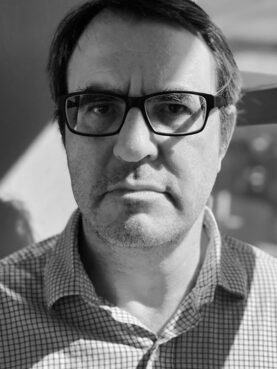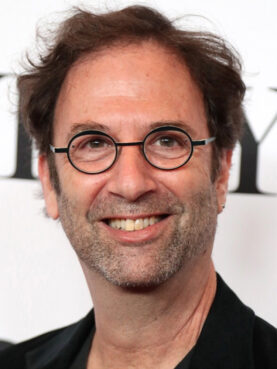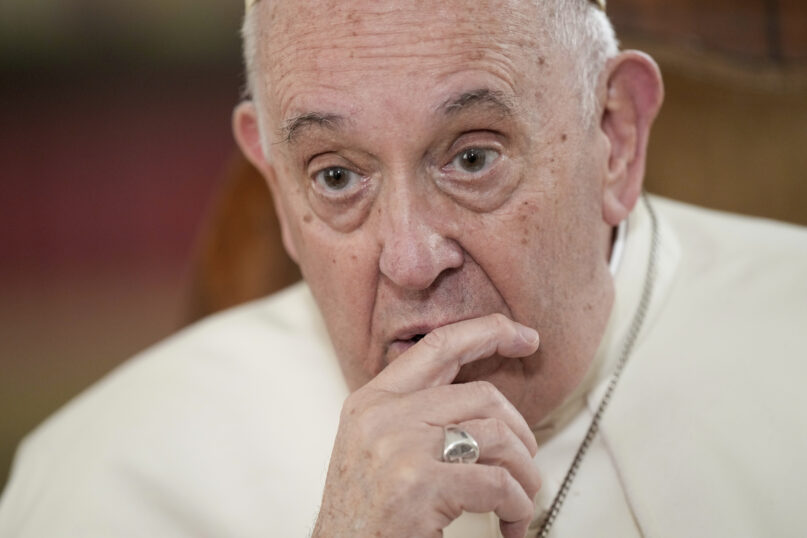Hitler became German chancellor 90 years ago. The world is still recovering.
The events of January 30, 1933, instilled a still-persistent yearning for xenophobic totalitarian rule.
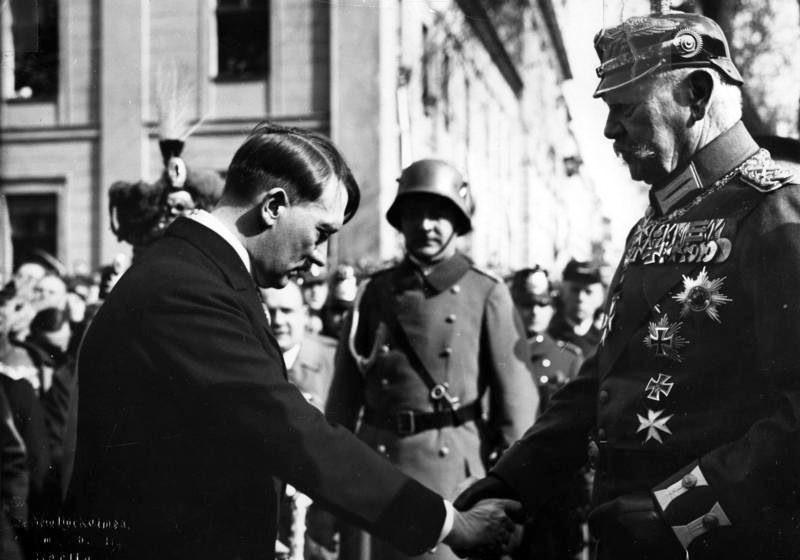
(RNS) — Nine decades ago today (Jan. 30), Adolf Hitler legally became chancellor of Germany. It’s often forgotten he gained that position without a successful insurrection, a violent coup d’état — or a rigged national election.
But, in fact, in Germany’s legislative election in November 1932, Hitler’s National Socialist German Workers Party — the Nazis — gained only 33.7% of the vote. Even after Hitler became chancellor, in March 1933, his party was still a minority, garnering only 43.9% of the vote.
The election set the stage for a catastrophic world war with tens of millions of deaths, including the mass murders of the Holocaust that nearly destroyed the global Jewish community. It poisoned many political systems with a bitter brew of hate and bigotry and instilled a long-lasting yearning among countless people for anti-democratic totalitarian rule.
In the Germany of 1933, the politically weak Weimar Republic was besieged by well-organized Communists and Nazis, hyperinflation and a lack of broad public support. Teetering on the verge of collapse, the fledgling republic could not withstand a Hitler incensed by his low vote total. He made certain the 1933 election would be Germany’s last until his suicide in late April 1945 and the crushing military defeat of Nazi Germany in World War II.
In appointing Hitler chancellor, the ailing German president, Paul von Hindenburg, falsely believed that he and leaders of the aristocratic conservative political and business establishment — Germany’s ruling class — could control and “civilize” the fanatical Nazis.
After all, they told themselves, Hitler had been a lowly army corporal, not even an officer, in World War I. Before that he’d been an unsuccessful artist, a raucous “nobody.” Perhaps the only thing the German establishment liked about Hitler was his public expression of virulent antisemitism.
But, of course, they utterly failed to rein in Hitler.
Their mistake in judgment was the more puzzling, and horrific, because the Nazi leader had clearly proclaimed his goal of ruling Germany as the “führer” — the ultimate dictator. Under his personal leadership, the Nazi Party would come to control all aspects of German life: Politics, culture, communication, industry, education, labor, family life, medicine, sports, science, economics and, of course, literature and religion.
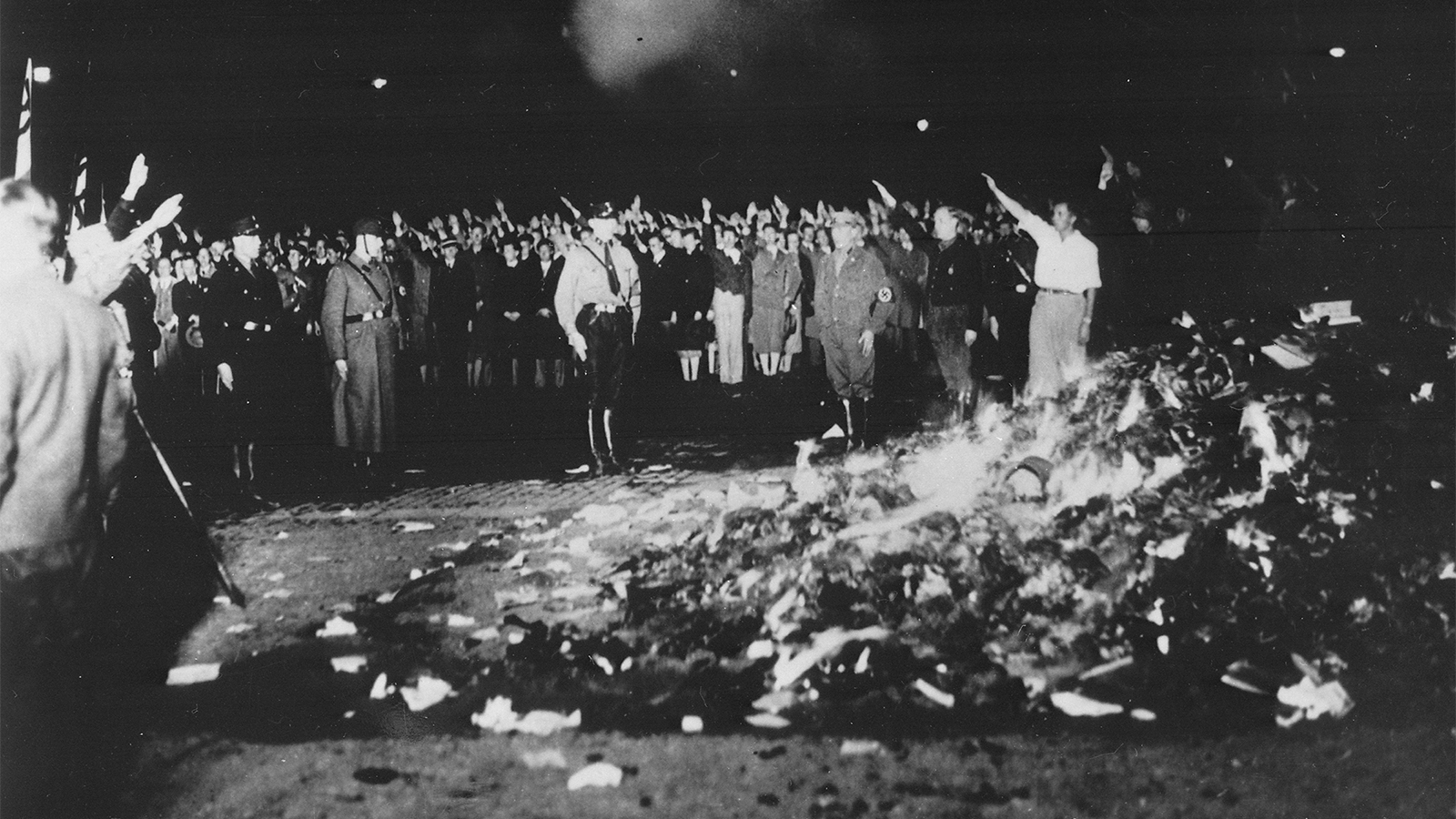
A Nazi book burning in Berlin’s Opera Plaza in May 1933. Photo by Georg Pahl/German Federal Archive/Creative Commons
On May 10, 1933, more than 40,000 people gathered in Berlin to witness the burning of 25,000 books, including works by Ernest Hemingway, Helen Keller, Sigmund Freud, Albert Einstein, Thomas Mann, Jack London and Theodore Dreiser. The book-burning area, Berlin’s Opera Plaza, is now a historical landmark that includes the 1820 prescient prediction by the German Jewish poet Heinrich Heine: “Where they burn books, they will also ultimately burn people.”
It was Hitler’s policy to subordinate both Protestantism (Germany’s largest religious community) and the Roman Catholic Church to the political power of his party. But there was much more on the Nazi agenda — there usually is in a dictatorship.
The Nazis organized the nationalistic “Deutsche Christen” (German Christian) church, so antisemitic that it renounced the Hebrew Bible (what Christians call the Old Testament) as well as the New Testament Letters of Paul because of their Jewish authorship.
The Nazi leadership and its sycophantic clergy supporters reshaped Christianity into an Aryan religion cut off from its deep theological and historical Jewish taproots.
In her excellent book, “The Aryan Jesus: Christian Theologians and the Bible in Nazi Germany,” Susannah Heschel of Dartmouth College documents how Ludwig Müller became the Reichsbischof (Reich Bishop) of the Nazi Church. During the Third Reich, many despicable theologians, consumed with traditional Christian antisemitism, transformed Jesus, the Jew of Nazareth, into an antisemitic Aryan warrior.
They also created a Nazi form of Christianity that was the archenemy of Jews and Judaism. Infused with such religious hatred, it was only a short step for millions of Germans to agree with Hitler’s policy of killing every Jew under his control.
There are numerous photos of Christian clergy wearing ecclesiastical robes in public that feature the abhorrent Nazi swastika symbol as they proudly offer the stiff-armed Nazi salute.
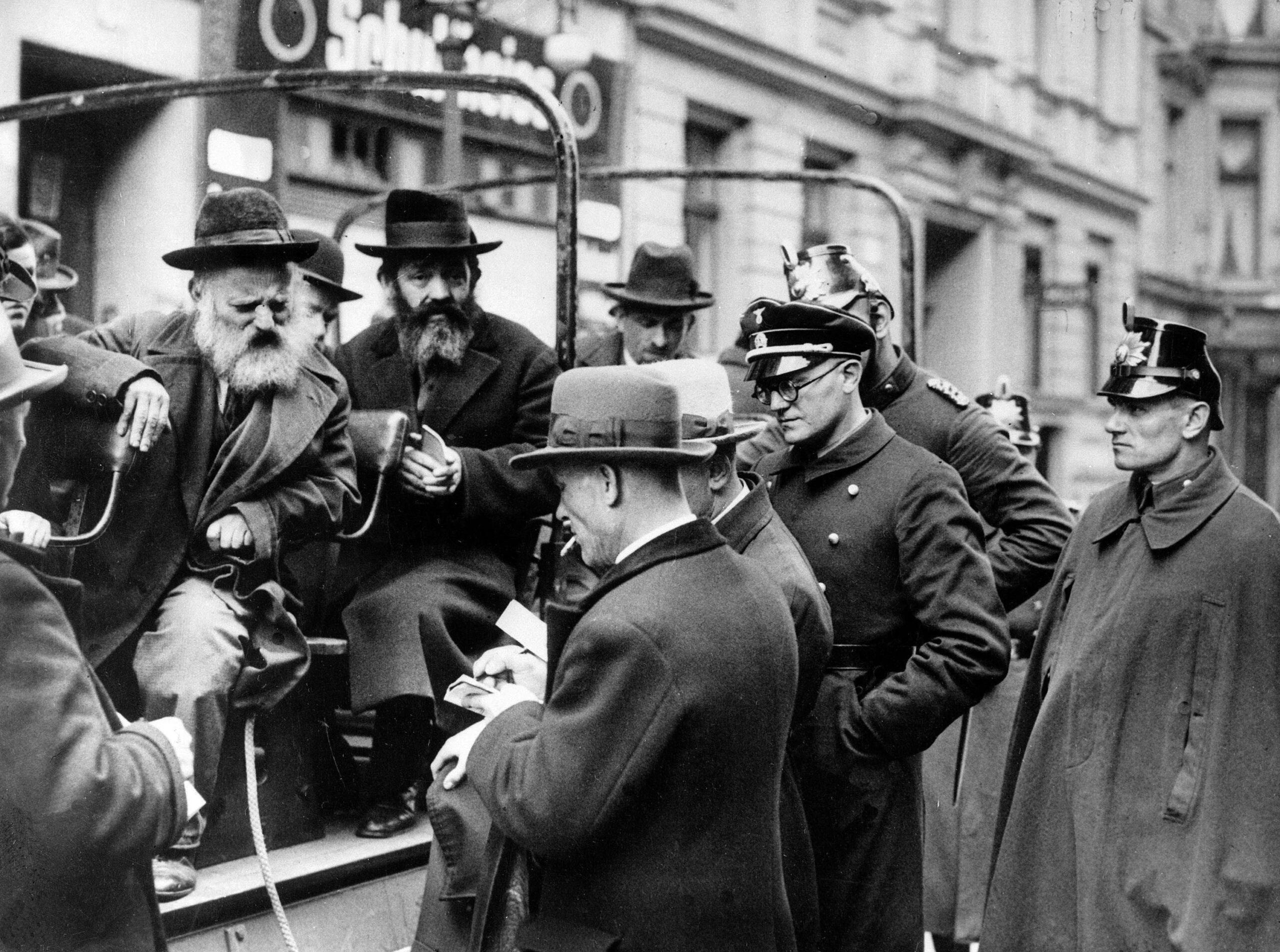
FILE – A busload of arrested Jewish men are questioned by government officials before being taken away in Berlin on April 11, 1933, shortly after Adolf Hitler’s takeover of power in Germany. (AP Photo/File)
Heschel notes that in 1939, the Nazi regime established the Institute for the Study and Eradication of Jewish Influence on German Church Life. She focuses especially on the Institute’s academic director, the antisemitic theologian Walter Grundmann, who was responsible for developing the Nazi version of Christianity.
Some Christian leaders, led by the philosopher Karl Barth, founded the anti-Nazi Confessing Church. Their efforts, historians agree, were mostly tepid and ineffective. Confessing Church leaders focused too heavily on protecting Jewish converts to Christianity and not upon the desperate genocidal removal of Germany’s Jews.
After World War II was underway, the young Lutheran pastor and scholar Dietrich Bonhoeffer abandoned the Confessing Church to join the anti-Nazi underground resistance movement. He was captured, imprisoned for two years and hanged in April 1945, a month before the end of the war. Bonhoeffer has become a Christian martyr because of his courageous anti-Nazi actions.
Even though Germany’s sharp descent into Nazi darkness began 90 years ago, the lights of freedom of conscience, political democracy and religious liberty still remain dim in many parts of the world. That is the still-urgent warning and the tragic legacy of January 30, 1933.
(Rabbi A. James Rudin is the American Jewish Committee’s senior interreligious adviser and the author of “The People in the Room: Rabbis, Nuns, Pastors, Popes and Presidents,” and was recently knighted by Pope Francis for his ecumenical outreach to Catholics. He can be reached at jamesrudin.com. The views expressed in this commentary do not necessarily reflect those of Religion News Service.)

